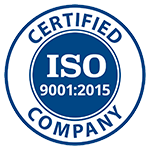Content Strategy of Audience Focused That Drives Conversions
Content is the most critical component for search engine discovery and ranking of a site. But all the organic traffic in the world is meaningless if that traffic does not convert into paying – or otherwise monetized – customers.
On February 20, I moderated an SEJ Think-tank webinar presented by Michelle Robbins, founder, and principal consultant at Beta Girl Consulting. Robbins shared a framework for creating a long-term content strategy that focuses on acquisition instead of eyeballs.
Content is the key to organic search acquisition. But before embarking on a content marketing campaign, you need to make sure you understand who your converting customers actually are. Look at your analytics and zero in on what types of content drove your existing customers to convert and then you can begin formulating a strategy to scale that success.
You’ll also want to segment out your audience by value (i.e., who are the people directly influencing your bottom line). For most companies, traffic in and of itself is meaningless. Conversions form the ground truth for success.
Conversions can be:
- A newsletter subscriber.
- A product or service purchase.
- An asset download.
- Any other customer acquisition as determined by your own business model.
Making significant changes in how you analyze your data can have interesting results and surface important insights. Page views can be a relatively easy metric to influence especially for a publisher. But what matters is not that people come to your site, it’s what they do when they arrive.
Do they:
- Sign up to your newsletter?
- Buy a product?
- Request a demo?
- Click on an ad?
One-and-done bounces are the least valuable visits you’ll get. You want to eliminate that kind of traffic and focus on tactics to generate valuable ROI-producing customers.
Rethinking Your Content Strategy
Focusing on quality over quantity is the path to getting valuable conversions. This may seem obvious, but in competitive spaces, it’s easy to get on a treadmill of constantly pushing out content without considering the overall value proposition of that content for both you and your customers.
Putting time and resources into publishing low-quality or redundant content doesn’t really benefit anyone in the long run. There are many ways to drive a quick spike in eyeballs to your website. But unless you’re effectively monetizing those non-targeted eyeballs, it’s a short-sighted way to approach your content strategy.
Before you undertake any new initiative or change of tactic, ask these questions first:
- Do I (or my client) need to do this?
- Will, it positively impact ROI or will it drain resources better spent on other ROI-positive efforts?
- Does it address the market realities we face?
- Are there other, even more, effective channels for getting the same result?
Asking these questions first will keep you and your team focused on the goal. Also, remember to always focus on the content and audience first. Search engine algorithms come second. All the rankings on organic traffic in the world don’t count if there are no conversions.
Creating a Content Framework
Armed with your data analysis, the next step is to put together a content strategy framework. This will help keep you and your content team focused on the same page and most importantly will keep things consistent.
Step 1: Define Topics
In this step, you want to define your core content topics based on your first-party data about your audience and what you already know about your customers. This data can come from multiple sources such as:
- Site traffic and analytics
- Ad campaign data.
- You’re CRM.
- Your social media engagements.
Understand what type of content drives conversions first and foremost. If you have insufficient first-party data, you can utilize third-party data through keyword and topic research.
Step 2: Classify Categories
Once you’ve defined your topics, the next step is to classify your content categories. These categories will inform the type of content you’ll create for your campaigns. While this will look different for every business, classifying types of content you’ll be producing will help:
- Maintain consistency across your initiatives.
- Give structure to your content strategies.
This is particularly important when you start deploying initiatives and introducing measures of leverage.
If you’re a marketing publisher, you may categorize your content as:
- News Content (Need to Know Now): This type of content involves time-sensitive information. As a result, the shelf-life of news content is relatively limited.
- Contributed Content (Need to Know How): This is primarily provided by practitioners in the field who offer tactics and deep dives into a specific area of marketing.
- Featured Content (Need to Be Thinking About): This type of content includes thought pieces, trends to watch, and resource compilations that tend to be more in-depth articles.
These categories will work nicely for a publisher, but depending on your business model, your content categories could be product information, how-to content, or FAQs. The final category we’re going to talk about is evergreen content, which is the most comprehensive and valuable content.
This category ultimately provides the most leverage and channel distribution opportunity to any organization and can be created by all types of businesses. Evergreen content can be kept current or updated as needed. Its relevance is not bound by time and trends.
Step 3: Define Requirements
Next, you’ll want to define the requirements to be applied to each initiative.
Here’s a sample set of requirements for a publisher:
- Unique information or new point of view.
- Credible sourcing and supporting data.
- Provide a benefit to the reader.
- Content That Converts: Process
After you’ve established the framework for your content strategy, you’re going to want to develop your process. Underpinning content strategy success is a process that demonstrates a commitment to playing the long game.Again, a solid content strategy is not about SEO or search engines, it’s about customers.
Produce Evergreen Content
Evergreen content is key to playing the long game. Time and resources are well spent producing high-quality core topic focus pieces that can be shared, promoted, leveraged, and kept current. The overall goal of evergreen content is to produce a resource to drive customers and brand loyalty while also cementing topic authority.
Maintain an Editorial Calendar
Also central to the process is having an editorial calendar. An editorial calendar is a foundation of operationalizing your content strategy. It keeps resources focused and allotted on an ongoing basis and enables you to create a repeatable rhythm to content creation.
There are several ways you can establish and maintain an editorial calendar. You can opt to use a simple Excel spreadsheet or a comprehensive project management system. Ultimately, the best system is always the one that you and everyone involved in your content projects will use consistently.
Leverage Multi-Purpose Content
The final step in the process is all about cementing authority around a given topic by creating a content initiative that can scale across multiple channels and is repeatable. The goal is to maximize channel distribution of a single content asset and then you simply rinse and repeat.
You don’t need to roll out a new piece of content every week or even every month if you’re able to leverage as many channels and modes as possible. Your editorial calendar could focus on one topic per quarter rolling out the distribution into the different channels throughout that quarter.
It’s far less daunting to undertake a comprehensive content strategy when you adopt a framework, create a process, and leverage the available channels. Depending on your topics, you can simply update and reroll out existing pieces of evergreen content on an annual or quarterly or you semi-annual basis, whatever makes sense for that topic.


